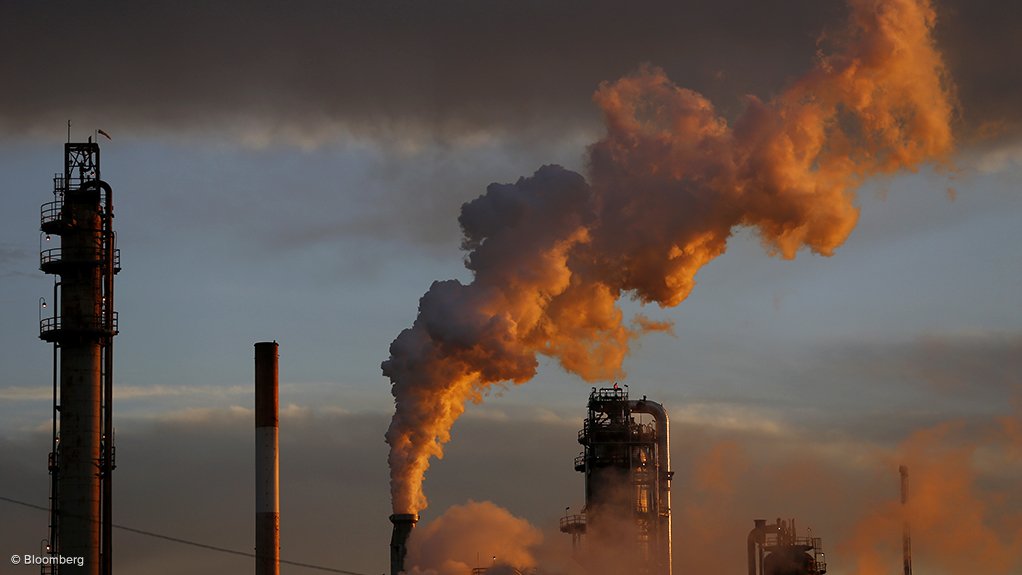South Africa’s overall emissions will reach their peak this year and will be followed by a downward trend that will culminate in the lowest emissions this decade in 2030, the draft first 'Biennial Transparency Report' (BTR) shows.
The BTR, which was published by Forestry, Fisheries and the Environment Minister Dr Dion George on October 7 for public comments, provides critical insights into the country's progress in implementing and achieving its Nationally Determined Contribution (NDC) under the Paris Agreement.
South Africa, as a party to the Paris Agreement, and in line with the modalities, procedures and guidelines of the Enhanced Transparency Framework, is required to submit BTRs every two years, with the first submission due by December 31.
The BTR tracks progress on the implementation of South Africa’s NDC, including the support needed and received for implementation. The report is necessary for understanding South Africa's progress in light of national circumstances, institutional frameworks and mitigation policies.
According to the draft BTR, South Africa’s emissions will generally decrease over the course of the rest of the decade, with notable reductions in 2026, 2029 and especially in 2030.
The BTR highlights that South Africa’s energy sector remains pivotal in the country’s efforts to reduce greenhouse-gas (GHG) emissions and promote sustainable development.
Key programmes, such as the 12L tax incentive, Eskom Integrated Demand Management, and Municipal Energy Efficiency and Demand Side Management collectively cut GHG emissions by five-million tonnes a year of CO2 equivalent (CO2e) from 2010 to 2022.
Initiatives such as the Renewable Energy Independent Power Producer Procurement Programme and the Natural Gas Fuel Switch programme further reduce emissions by 16-million tonnes of CO2e, contributing to a total reduction of 21-million tonnes of CO2e, which represents 36% of sector-wide emission reductions.
In the transport sector, the Bus Rapid Transit (BRT) programme and the Transnet Road-to-Rail programme reduced GHG emissions by 300 000 t/y of CO2e from 2010 to 2022. The BRT programme improved urban public transportation, reducing traffic congestion and fuel consumption, while the Road-to-Rail programme shifted freight transport from road to rail, further lowering emissions.
The industrial processes and product use sector saw significant reductions in nitrous oxide emissions through advanced technologies and process modifications, contributing to a reduction of 1.3-million tonnes a year of CO2e from 2010 to 2022. These efforts supported South Africa’s climate goals by lowering the environmental impact of nitric acid production.
In agriculture, conservation agriculture and grassland restoration reduced emissions by 2.1-million tonnes a year of CO2e from 2010 to 2022. These practices, promoted through various government programmes, enhanced soil health, water retention and agricultural productivity.
The forestry sector, primarily through afforestation and forest restoration, achieved the largest emission reductions, accounting for 54% of the total reductions, or 31-million tonnes a year of CO2e yearly from 2010 to 2022. These actions boosted environmental sustainability, biodiversity, and ecosystem health.
The monitoring of South Africa’s overall emissions tracks emissions both excluding and including land use, land-use change and forestry (LULUCF).
According to the BTR, in 2021, South Africa's total GHG emissions, excluding LULUCF, were recorded at 488.32-million tonnes of CO2e, with a slight reduction in 2022 to 478.89-million tonnes.
When LULUCF is accounted for, emissions were lower, at 464.96-million tonnes of CO2e in 2021 and 435.83-million tonnes in 2022. Both sets of figures remain within the country’s mitigation targets for the period between 2021 and 2025.
Overall, the report shows that emissions without LULUCF are consistently higher than those with LULUCF, highlighting the significant impact of land use and forestry on mitigating total emissions.
Members of the public can submit their comments on the draft BTR within 15 days of its publication to the Department of Forestry, Fisheries and the Environment.
EMAIL THIS ARTICLE SAVE THIS ARTICLE ARTICLE ENQUIRY
To subscribe email subscriptions@creamermedia.co.za or click here
To advertise email advertising@creamermedia.co.za or click here











